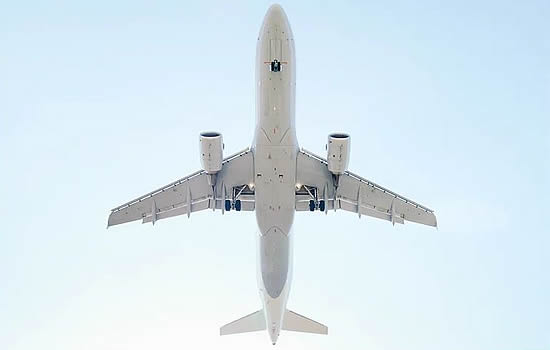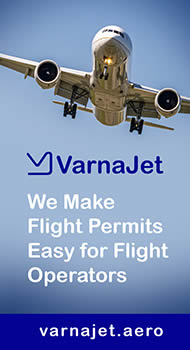Navigating the changing landscape of overflight and landing permits is a challenging task for airlines and flight operators.
In this article, leading flight permits company VarnaJet directs you through the often convoluted process of obtaining overflight and landing permits and demonstrates how their expertise makes it a seamless experience.
Understanding the Basics
A flight permit is essentially an authorization to an aircraft to enter and operate within a particular country's airspace or to land at a country's airport. It is a fundamental requirement for every international flight, and the process of obtaining one can vary significantly from one country to another. Here's a glimpse into the common steps involved in securing these permits, taking into account the differences between a country to another.
While overflight permits are typically required for international flights, it's essential to note that in some countries, they might not be necessary for specific flight types, such as private flights. In these cases, a well-prepared flight plan might suffice, making the process more straightforward. Some of the countries of this criteria are Albania, Armenia, Belize, Costa Rica, El Salvador, and Georgia.
Gathering Flight Information and Aircraft Documentation
Before initiating the permit application, airlines and flight operators must compile all necessary flight information and aircraft documentation. This includes details such as the flight schedule, crew information, aircraft details, and aircraft certificates. It's important to note that considerations vary depending on whether the request is for an overflight permit or a landing permit, a non-scheduled flight or a scheduled flight, a private flight or a commercial flight, etc. And all varies from one country to another. Please read our guides that explain these specifics thoroughly.
Contacting Civil Aviation Authorities (CAAs)
Once the documentation is complete, the next step is to submit the request to the relevant Civil Aviation Authority (CAA). However, the method of communication can differ widely from one country to another. In some countries, CAAs expect permit requests to be sent via specific email addresses. Some of the countries of this criteria are Bangladesh, Cambodia, Cameroon, Congo, Djibouti, and Eritrea.
In other nations, they require requests to be transmitted through the Aeronautical Fixed Telecommunication Network (AFTN) communication system. Some of the countries of this criteria are Algeria, Azerbaijan, Kazakhstan, Kyrgyzstan, Lebanon, and Taiwan.
In a few instances, CAAs may have an online portal where applicants must have an account and provide credentials to submit flight details. Some of the countries of this criteria are Bahrain, Capo Verde, Central African Republic, China, Colombia, and Ecuador.

Verification and Processing
CAAs play a crucial role in reviewing and verifying all the information and documentation. If everything is in order, they issue the flight permit. However, this process can vary significantly:
Some CAAs will issue the permit once they've conducted their review and send the permit number back to the applicant. In other countries, applicants may need to follow up with the CAA via phone calls or other means to expedite the process.
Maintaining strong relationships with local contacts can be pivotal in the flight permit process. VarnaJet leverages its local presence and connections to liaise with CAAs effectively. These local experts can facilitate communication and ensure that permit applications are processed smoothly.
Mandatory Local Agents
In some countries, CAAs mandate the use of local and licensed agents for the permit application process. VarnaJet's global network includes partnerships with local agents and handlers in these regions, ensuring that all regulatory requirements are met. VarnaJet is obtaining all flight permits directly with the local CAA in every country except for some countries where it is mandatory or preferred to use a local agent. Some of the countries of this criteria are Egypt, India, Niger, and Pakistan.
Financial Considerations
Financial aspects are a crucial component of obtaining flight permits. In certain countries, a deposit for air navigation fees is required before the permit is issued. Some CAAs may ask for air navigation fees to be transferred before permitting flight. Additionally, in some locations, a CAA processing fee is imposed, separate from the air navigation charges.
Conclusion
Airlines and flight operators must navigate a labyrinth of regulations and requirements in various countries to ensure smooth and hassle-free flight operations. By understanding the intricacies of different CAAs' expectations, maintaining strong relationships, adhering to local regulations, and staying current with changing rules, VarnaJet ensures that flight permits are obtained with ease.
Let us handle the complexities, so you can focus on soaring through the skies.





